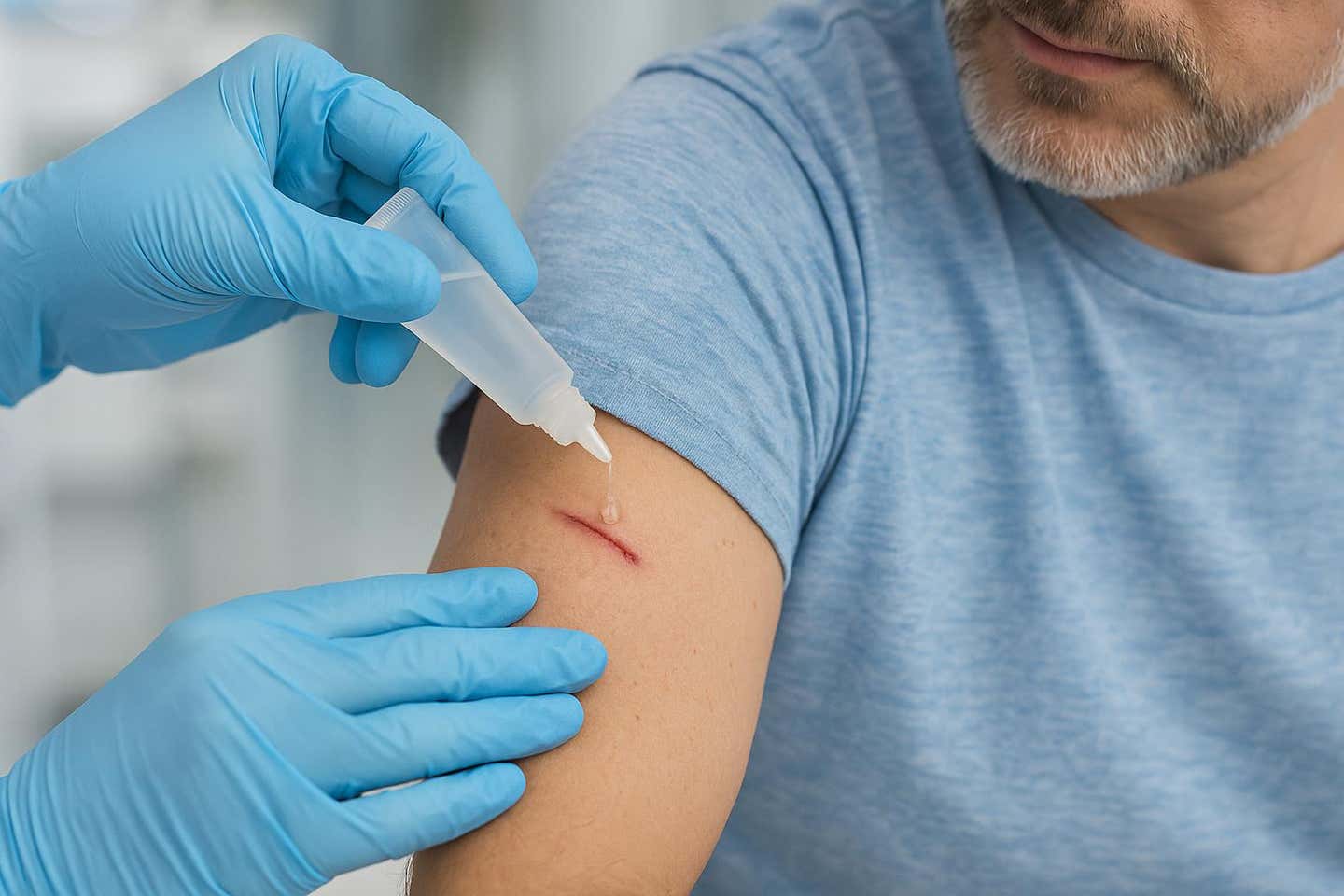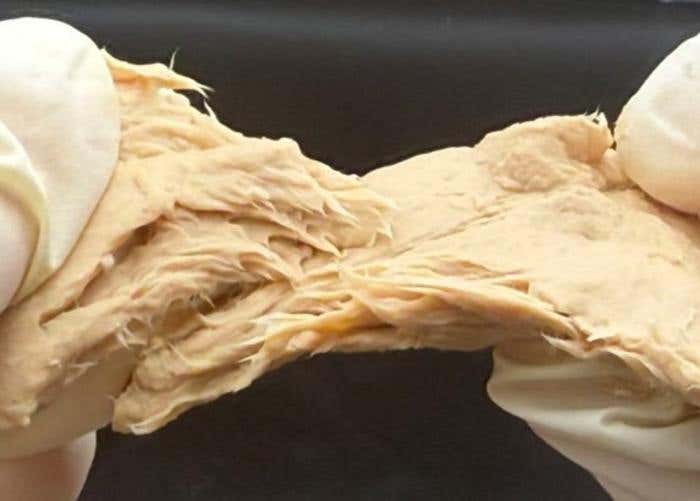New bio-inspired medical glue seals bleeding wounds in seconds
A new generation of bioadhesives may one day replace sutures and staples in surgeries and stop life-threatening bleeding in seconds.

Inspired by barnacles, scientists created a medical glue that seals bleeding wounds in seconds. (CREDIT: AI-generated / The Brighter Side of News)
When you think of medical glue, chances are you picture a quick fix for small cuts. But scientists are taking the idea of glue far beyond first-aid kits. A new generation of bioadhesives—medical glues inspired by the natural world—may one day replace sutures and staples in surgeries, stop life-threatening bleeding in seconds, and even let doctors safely remove or reposition implants inside the body.
The promise of these adhesives comes from solving one of medicine’s biggest challenges: how to get something to stick in a wet, messy, constantly moving environment like human tissue. If a material can do that, it could change the way doctors handle trauma care, surgery, and recovery.
Learning from barnacles and spiders
Researchers at MIT and the Mayo Clinic took their cue from creatures that have mastered sticking to tricky surfaces. A few years ago, one MIT team created a surgical tape inspired by spider silk. Spiders use sticky polysaccharides to hold prey even in damp conditions, and the MIT design worked in a similar way, quickly absorbing water and leaving a dry spot for glue to attach. That invention showed promise for closing surgical incisions.
But the new project looked to another expert in adhesion: the barnacle. These tiny sea creatures are experts at clinging to rocks, ships, and even whales, all while living in the rough, wet ocean. What makes barnacle glue so effective is its structure. Proteins that act like sticky hooks are suspended in a natural oil, which pushes away water and contaminants so the adhesive proteins can grab onto a surface.
“We found that this creature living in a marine environment is doing exactly the same thing that we have to do to deal with complicated bleeding issues,” explains MIT Research Scientist Hyunwoo Yuk, one of the study’s lead authors.
The team mimicked that process by mixing medical-grade silicone oil with microparticles of a specially engineered polymer. The oil sweeps away blood and fluids, while the particles quickly bind to tissue. Press it onto a wound, and within about 15 seconds a tight seal forms, even in areas covered in blood.
Related Stories
- Smart bandage tracks and treats chronic wounds in real time
- Common ingredient in herbal tea revolutionizes wound care and biomonitoring
Glue that beats the clock
Stopping blood loss fast is crucial. Among soldiers on the battlefield, it’s the leading cause of death after injury. For civilians, it ranks second after trauma. Traditional stitches are too slow to apply in emergencies, and patches with clotting factors can take minutes to work—an eternity when bleeding is severe.
That’s where this new bioadhesive shows its strength. In lab tests with rats, the glue sealed wounds in under half a minute. In studies with pigs, it rapidly stopped liver bleeding and worked better than commercial agents currently available. Even when the pigs were given strong blood thinners, the glue still did its job.
Dr. Christoph Nabzdyk, a cardiac anesthesiologist and critical care physician at the Mayo Clinic who co-led the study, puts it bluntly: “We’re technically capable of carrying out a lot of complicated surgeries, but we haven’t really advanced as fast in the ability to control especially severe bleeding expeditiously.”
The glue holds up for weeks, long enough for the tissue underneath to heal, and causes little inflammation. Over time, it safely dissolves inside the body. And if doctors need to remove it sooner—for instance, to access a wound site later—they can apply a special solution that gently breaks the bond without damaging surrounding tissue.
One advantage of the paste-like glue over earlier adhesive tapes is its flexibility. Tapes are flat and work best for neat, straight incisions. But in the chaos of trauma, wounds are rarely so tidy. The paste can be molded to fit irregular shapes and pressed into place, adapting to whatever the injury looks like. “The moldable paste can flow in and fit any irregular shape and seal it,” says MIT postdoc Jingjing Wu.
That versatility could make the glue a valuable tool not just in hospitals but also in ambulances, on the battlefield, or anywhere fast bleeding control is needed.
Designing an adhesive that listens to doctors
Another group of researchers took the challenge a step further. They developed a bioadhesive that not only bonds instantly to wet tissue but can also be detached on demand, an option that has eluded scientists until now.
Their formula relies on polymers such as polyvinyl alcohol and poly(acrylic acid) combined with a compound called NHS ester. When pressed onto wet tissue, the material soaks up water like a sponge, then latches onto the tissue with a mix of weak and strong bonds. These include hydrogen bonds and electrostatic forces, followed by more permanent chemical links.
The clever twist comes in how doctors can remove it. By applying a mild solution of sodium bicarbonate (essentially baking soda) and glutathione, a natural antioxidant, the adhesive’s bonds break apart and the glue lifts off gently. No heat, harsh chemicals, or ultraviolet light required.
In rat studies, the material proved biocompatible, causing minimal reaction in tissue. In tests with pig organs, it sealed leaks in lungs and was safely detached from a beating heart when needed. This approach could allow surgeons to reposition adhesives or remove implanted devices without causing new injury.
The future of wound care
Every year, millions of surgeries worldwide rely on sutures and staples. While they remain reliable, they also cause small punctures in tissue, take time to place, and may not provide airtight or watertight seals. Adhesives could reduce surgery times, minimize scarring, and improve patient recovery.
Xuanhe Zhao, professor of mechanical engineering and civil and environmental engineering at MIT and senior author of the barnacle-inspired glue study, sums it up: “We are solving an adhesion problem in a challenging environment, which is this wet, dynamic environment of human tissues. At the same time, we are trying to translate this fundamental knowledge into real products that can save lives.”
With new adhesives that are strong, flexible, and even reversible, the days of relying solely on stitches and staples may be numbered.
Practical Implications of the Research
If these adhesives prove successful in larger clinical trials, they could change emergency medicine. First responders might one day carry tubes of moldable paste capable of saving lives in seconds. Soldiers on the battlefield could receive immediate treatment for severe wounds before reaching a hospital.
Surgeons may also see operating times cut down, giving them more control during complex procedures. Adhesives that can be removed safely mean fewer risks when devices need to be repositioned or replaced. Patients could experience faster recovery, fewer complications, and less scarring.
In the long term, the technology might extend to everyday medical devices, improving how catheters or heart-assist machines are attached to the body. With millions of surgeries each year, even small improvements could have an enormous impact.
Note: The article above provided above by The Brighter Side of News.
Like these kind of feel good stories? Get The Brighter Side of News' newsletter.



